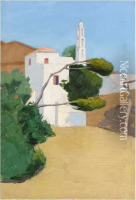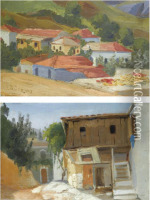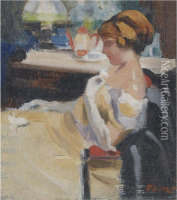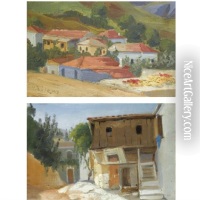Pericles Lytras Paintings
Pericles Lytras was a significant figure in Greek painting, born in Athens in 1832. He was one of the most prominent representatives of the Greek academic realism of the 19th century, heavily influenced by the Munich School, which played a pivotal role in shaping modern Greek art.
Lytras' father was a well-known icon painter, which exposed him early to the world of art. He initially studied at the Athens School of Fine Arts, where he was taught by Ludwig Thiersch, a Bavarian painter who was one of the foreign artists called to Greece to help establish the newly founded school. Lytras' talent was recognized early on, and he was awarded a scholarship to continue his studies at the Royal Academy of Fine Arts in Munich, a hub for Greek artists at the time.
In Munich, Lytras was influenced by the teachings of Karl Theodor von Piloty, a leading German artist of the time known for his history paintings. Lytras' style was characterized by meticulous technique, attention to detail, and often dramatic narratives. He became adept in portraying historical and mythological themes, but also scenes from everyday life, which became very popular. His works often reflected the social and historical context of Greece during his lifetime, including depictions of the Greek War of Independence.
After completing his studies, Lytras returned to Greece and became a professor at the Athens School of Fine Arts, where he taught and influenced a new generation of Greek artists. Among his students was the famous Greek painter, Nikolaos Gyzis, who would also go on to become a significant figure in Greek art.
Lytras' work was widely appreciated, and he received several honors during his lifetime. He was an artist who managed to blend the academic style with a national Greek element, which gave his work a distinctive character. His paintings are housed in many galleries across Greece and have been featured in numerous exhibitions showcasing 19th-century Greek art.
Pericles Lytras passed away in Athens in 1904, leaving behind a legacy that significantly contributed to the shaping of modern Greek art. His work continues to be studied and admired for its technical proficiency and its role in the development of Greek artistic identity.








